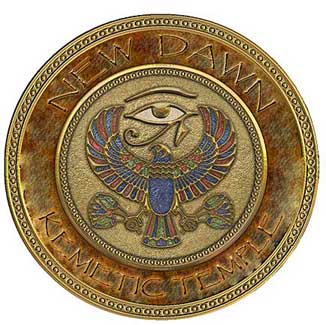|
|
|


~Mark Andrews~
Only in 1961, while restoration and cleaning work was being
carried out between the Temples of Hatshepsut and Mentuhotep II, were the remains
of a small temple (measuring 40 meters by 45 meters) constructed by Tuthmosis
III discovered on a small elevated terrace between those two better known monuments
on the West Bank at Luxor (ancient Thebes). The temple was discovered by the
Polish Center of Mediterranean Archaeology under the direction of Kazimierz
Michalowski, who's excavation of the site lasted until 1967. Presently, the
Polish-Egyptian Archaeological Mission under the direction of Jadwiga Lipinska
continues to carry out excavations at this temple.
This temple was built near the end of Tuthmosis III's reign, probably in his
43rd year of rule, under the direction of a vizier named Rekhmire, who's tomb
number 100 is located at Sheikh Abd el-Qurna on the West Bank. It should be
noted that this is about the time that Tuthmosis III began the well known destruction
of Hatshepsut's name and images throughout Egypt. We believe it probably remained
unfinished upon his death in year 54, and was most likely completed by his successor,
Amenhotep II.
Tuthmosis III's temple was dedicated to Amun in the form of both Amun-Re and Amun-Kamutef, and nearby, a chapel was built to honor Hathor, as well. Its ancient name was (Amun)-Djeser-akhet, meaning "Holy of Horizon". Recent finding seem to indicate that there was probably no mortuary cult of the king at this temple. Instead, Tuthmosis III had another temple built not far away as his personal cult temple.
The larger part of the temple is positioned above the level of the upper terrace of the temple of Hatshepsut and rests on a roughly square platform partially cut from the rock and partially constructed of loose stones, supported by a stone revetment. It takes up the central position relative to the axis of the valley, and while Tuthmosis III traditionally is thought to have not been much of an admirer of his stepmother, nevertheless this temple seems to draw its architectural style from her adjacent temple. The temple included a system of ramps and terraces, and included a large hypostyle hall with 76 polygonal columns around the perimeter and 12 larger columns closer to the center. These elements were followed by a hall for Amun's boat, and the inner sanctuary.
Regardless of the architectural inspiration this temple may have taken from Hatshepsut's adjacent temple, it was probably built at least in part to upstage her facility. It played an important role in the Beautiful Feast of the Valley and probably replaced Hatshepsut's facility, which may have been rendered unusable for such events by Tuthmosis III, as the final destination of the holy procession, thereby receiving the Barque of Amun.
The excavations of the temple revealed some very magnificent polychrome bas-reliefs, including two that are now on exhibit at the Luxor Museum. One of the most splendid reliefs depicts Tuthmosis III wearing the atef-crown.
Cult worship at the temple lasted into the 20th Dynasty before being abandoned, probably because of a landslide, resulting from an earthquake, that seriously damaged the buildings. Afterwards, it was first quarried for its stone by the ancient builders, and much later, during the Christian era, used as a cemetery for the monastery located at Hatshepsut's temple. Today, only a small part of the western wall survives, along with some chambers. These have been mostly restored, and the painted reliefs held in position by polychrome blocks.